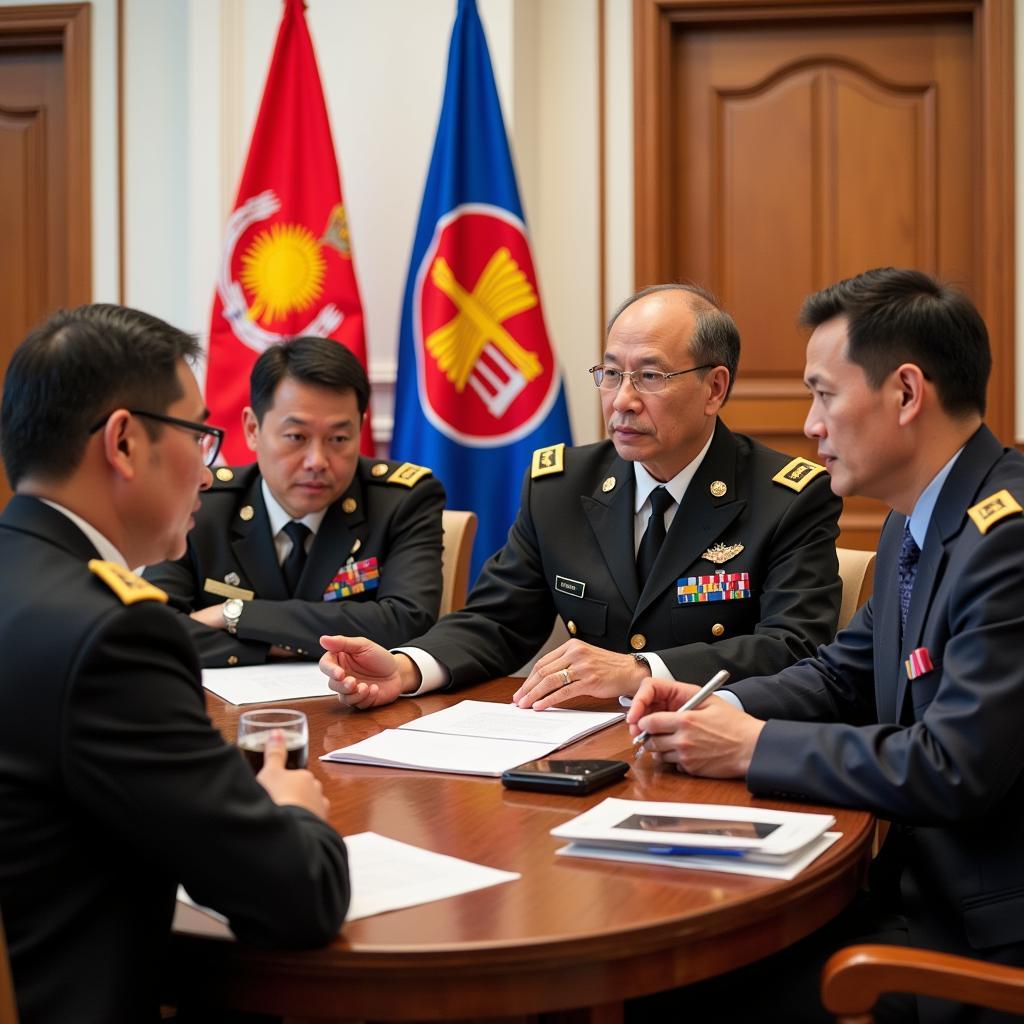Formed in 1967, ASEAN has transitioned from a nascent organization to a significant player on the global stage. This journey has been marked by notable achievements, but not without its fair share of challenges. This article delves into the triumphs and hurdles faced by ASEAN, analyzing its impact on Southeast Asia and the wider world.
Economic Integration and Growth: A Cornerstone of ASEAN’s Success
One of ASEAN’s most significant achievements has been fostering economic cooperation and integration among its member states. The establishment of the ASEAN Free Trade Area (AFTA) in 1992 was a landmark moment, aiming to eliminate tariffs and promote the free flow of goods within the region. This initiative has facilitated a surge in intra-ASEAN trade, transforming Southeast Asia into a dynamic economic bloc.
 ASEAN Economic Growth
ASEAN Economic Growth
Beyond AFTA, ASEAN has implemented various agreements to streamline trade, encourage investment, and promote economic integration. These efforts have contributed to the region’s impressive economic growth, with ASEAN emerging as one of the fastest-growing economic blocs globally. This sustained economic progress has played a pivotal role in poverty reduction and improving living standards across Southeast Asia.
Maintaining Peace and Stability: A Collective Effort
In a region with a history of conflict and political complexities, ASEAN has been instrumental in maintaining peace and stability. The organization’s commitment to dialogue, consensus-building, and non-interference in internal affairs has fostered a spirit of cooperation among its member states. This approach has been crucial in managing territorial disputes, promoting confidence-building measures, and preventing conflicts from escalating.
 ASEAN Security Cooperation
ASEAN Security Cooperation
ASEAN’s role in addressing transnational challenges such as terrorism, piracy, and natural disasters is another testament to its commitment to regional security. Through platforms like the ASEAN Regional Forum (ARF), the organization has facilitated dialogue and cooperation on security issues, involving external partners like the United States, China, and the European Union. This inclusive approach has contributed to a more stable and secure Southeast Asia, fostering an environment conducive to economic growth and development.
Challenges on the Horizon: Navigating Complexities in a Changing World
While ASEAN has made significant strides, it faces several challenges. One prominent issue is the disparity in economic development among member states. This gap can hinder deeper integration efforts and create tensions within the bloc. Bridging this development divide is crucial for ASEAN’s long-term success.
 ASEAN Future Challenges
ASEAN Future Challenges
Another challenge is navigating the increasingly complex geopolitical landscape. With the rise of China, shifting power dynamics in the Asia-Pacific region pose both opportunities and challenges for ASEAN. Maintaining its centrality and unity in the face of great power competition will be paramount for the organization’s continued relevance.
ASEAN’s Future: Towards a More Integrated and Resilient Region
ASEAN’s journey has been one of remarkable progress. Its commitment to economic integration, peace, and stability has transformed Southeast Asia into a vibrant and dynamic region. However, challenges remain, demanding innovative solutions and a continued commitment to dialogue and cooperation.
Looking ahead, ASEAN must prioritize inclusive growth, bridge development gaps, and strengthen its institutional capacity to effectively address emerging challenges. By doing so, ASEAN can build on its past successes and secure a prosperous and resilient future for its people.
FAQs
-
What are the main goals of ASEAN? ASEAN aims to accelerate economic growth, social progress, and cultural development; promote regional peace and stability; and enhance cooperation among member states.
-
How does ASEAN promote economic integration? ASEAN promotes economic integration through initiatives like AFTA, which aims to eliminate tariffs and facilitate free trade among member states.
-
What role does ASEAN play in maintaining regional security? ASEAN fosters dialogue, promotes confidence-building measures, and addresses transnational challenges like terrorism and natural disasters.
-
What are some of the challenges facing ASEAN? Challenges include economic disparities among member states, navigating complex geopolitical dynamics, and addressing non-traditional security threats.
-
What is the future outlook for ASEAN? ASEAN’s future hinges on its ability to promote inclusive growth, bridge development gaps, and adapt to the evolving regional and global landscape.
For further information and resources on ASEAN, please visit:
Need assistance or have more questions? Contact us at Phone Number: 0369020373, Email: [email protected], or visit us at: Thôn Ngọc Liễn, Hiệp Hòa, Bắc Giang, Vietnam. Our dedicated customer support team is available 24/7 to assist you.